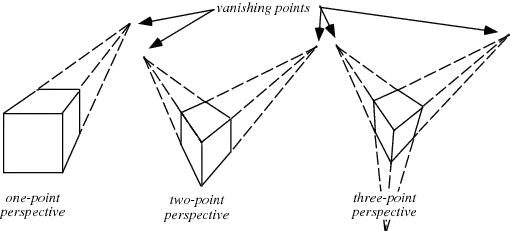Answer In the simple case you mention (objects laying on the line of vision) the vertical distance of the station point to the ground line of an object (laying on the ground) is the distance of the viewer to the object measured in units in the object's plane.
example. A simple illustration would be if we draw a vertical line from the horizon and place the station point at the end of this line, we could place an object on the ground as far away from us as we are tall by bisecting the line. We could place another object away from us 3 times our height by bisecting the distance from the ground line of the first object to the horizon.
Objects in other positions if we are only interested in the depth of the object we can easily project that line onto our line of vision or the ground line (for "floating" objects) using horizontal and vertical lines. For 2 point perspective our station point is essentially chosen once we choose the two vanishing points and a vision center line. If you draw a circle with a center at the midpoint of the vanishing points and intersect that with the vision center line that is the station point. A consequence of this, is that generally for 2 point perspective drawings you should place your your vanishing points further from each other than you want your drawing to be high, otherwise your perspective implies that what you are drawing is in behind your viewer which is impossible.
Guidelines Generally placing the station point first gives you great control over your drawing as it is easier to plan everything out relative to the station point. Practically you would probably want to establish your image plane for sizing, then choose your station point depending either on your preferred angle of view or relative distance to the picture plane. Note that choosing a angle of view larger than 60 degrees, or relative viewing distance smaller than 2 times your height will result in distortion that will look "unnatural".

